Nigeria
Borno, is the name of one of 36 states in Africa’s most populous nation. It is situated specifically in the north eastern part of Nigeria.
It is home to the Sambisa forest, to Chibok and to Maiduguri. Far from some of her more illustrious northern neighbours, Kano, Sokoto and Kaduna, the deadly and hitherto rampaging Boko Haram insurgency cruely snatched so much from the state.
The insurgency came as close as snuffing life out of the once vibrant town. Maiduguri was left in a state of infrastructural chaos and communal disarray. Such was the extent of the damage. With an upped military onslaught, the insurgents are thankfully on the back foot.
The strong willed people still feel the urge to return to their homes or whatever is left of it. A rebirth of and a resuscitation of the once bustling state.
But who to fill the “ordinary man’s void?”
That was what motivated a daughter of Borno State to step up to the challenge. Camera in hand, and a focus to promote and project the ordinary Borno man, woman or child, Fati Abubakar braved the odds to not just tell, but pictorially represent Borno away from the strife and heat of the insurgency and the plush rebuilding fundraisers and dinners which the ordinary people hardly ever get invited to.
Her mission is spelt out as follows; “Chronicling Everyday Life in Borno.” Fati paints the perfect picture of the ideal nation and her facts are verifiable. ‘‘I wanted a photojournalism direction that would highlight but the good, bad and the ugly without focusing only on one facet,’‘ Fati said in an interview with blog, Umm Fariha Network.
On #ArmedForcesRemembranceDay we applaud the Nigerian army.
With you, #Borno will be Home of Peace again. pic.twitter.com/0xfHc5Bn7w
— Yerwa (@bits_of_borno) January 15, 2016
The people she deals with are on the ground. The pictures she snaps and shares break down the barriers of age, they are without race and creed, much less colour, ethnicity and social or political class.
And that’s what an image of a little girl Aisha portrays and tells us, in an albeit shy pose, her inner feelings are conveyed in words as told to Fati.
Fati talks to a baker from the oil rich southern Bayelsa State who loves to stay in Borno and no where else. She also captures the manner in which Muslims and Christians had to be strong for each other at the height of the insurgency, the little children who miss their school days, the Islamic school teacher who fled the conflict and scores others.
'When the insurgency was happening, my Kanuri, Hausa neighbors and I used to hide together'
Emmanuel#bitsofborno pic.twitter.com/Z4XKbfjpDu
— Yerwa (@bits_of_borno) May 7, 2016
Pictures that show joy, exude sorrow, ignite reflection and carry the inner feelings of the ordinary person in Borno. Such are the images that Fati’s photography projects everytime they hit facebook, twitter and instagram.
'Don't show my face but I want to tell the government we don't have solar lights in our neighborhood' #bitsofborno pic.twitter.com/Na8173H6gk
— Yerwa (@bits_of_borno) April 27, 2016
Clearly, those are materials you’d hardly find conventional media treat, and is what sets Fati’s work apart as it has become the toast of social media users.
Social media filling the conventional media void
The ‘Bits Of Borno’ campaign is one buoyed by social media platforms, twitter, facebook and instagram - conduits through which pictorial bits of Borno are sprinkled cautiously for the global audience from Taz Mania through to Seychelles, Cuba, Zimbabwe, Uzbekistan and beyond.
With very modest social media following @bits_of_borno has 1724 followers. On facebook some 4535 people have ‘‘liked’‘ and vigorously “share” bits that are posted as is the case on picture sharing hub, instagram where Fati’s efforts have garnered 1616 followers.
The conventional media (majority) so to say, are focused more on the insurgency – after all, journalists will tell you “when it bleeds, it leads”. They also focus on putting out the plight of the 1000s displaced by the insurgency and hanker after the plush programs organized to rebuild Borno amongst others the flash and shine of huge multinational and home based donors who are teaming up with the federal government to put Borno back on her feet.
So the media prioritizes what sells them their ad spaces and that’s understandable because bills have got to be settled.
Rebuilding Borno ‘Yerwa style’
It’s just a matter of time that the mainstream media will turn to Fati and others like her to hear and to feel the pulse of the ordinary persons. Those who did not hear of or read about the insurgency but experienced it at first hand yet count themselves among the few who lived to tell the crude and rude episodes of the horrific past.
However, the infrastructure is built and polished, it takes the ordinary people to make use of it as did they in the serene past.
‘‘I would love to show the world that life in Borno goes on, we’ve become stronger even in adversity. We are optimistic it will end, we will heal and rebuild,’‘ Fati answered when asked about perceptions she wanted to change through her work.
Truly we will overcome #Bokoharam because no condition is permanent. #Maiduguri #Borno #photojournalism pic.twitter.com/wq5LhF1zhN
— Yerwa (@bits_of_borno) September 27, 2015
Fati is healing that real aspect of the people and perceptive part of most outsiders that “Life goes on” in Borno but more importantly, that life never for a moment stopped. At best Borno just slowed due to the insurgency.
All photos courtesy of Fati Abubakar
Shaban Abdur Rahman Alfa
Africanews web journalist, Congo Pointe – Noire





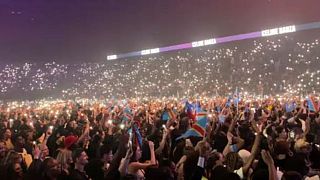
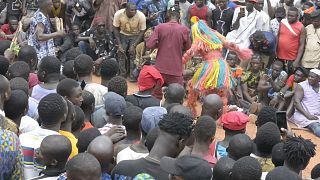

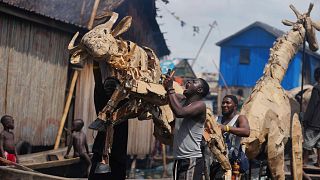
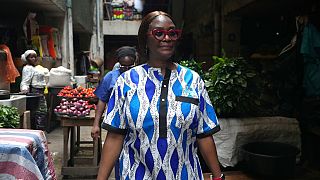

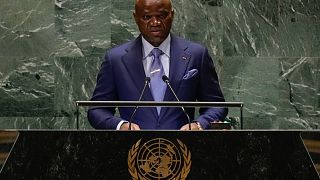
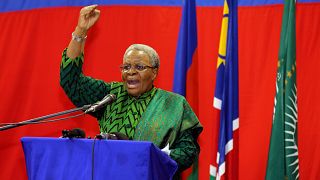

Go to video
Benin says 54 soldiers killed in Islamic militant attack
Go to video
Burkina Faso military government says it thwarted "major" coup attempt
Go to video
Funeral held in Kenya for TikTok content moderator
Go to video
Scores killed in attack by gunmen in central Nigeria
01:09
Yinka Shonibare explores identity and hybridity in new Madagascar exhibition
Go to video
UN concerned after Niger quits force fighting armed Islamist groups